Key Points:
- The new iPhone 16 brings compatibility with the latest Wi-Fi standard, Wi-Fi 7, to both the regular and Pro iPhone 16 models.
- Cellular changes on paper are minor, with the only surprise being the dropping of LTE-LAA compatibility. The expected
Qualcomm X75modem chipset should provide better 5G carrier aggregation capabilities, peak speeds, and fringe area connectivity. UPDATE: Seeming not X75! - The satellite connectivity first introduced in the iPhone 14 remains, and the new iOS 18 release will enable all iPhones since the iPhone 14 to use satellite messaging for text messaging and iMessage, not just for emergency SOS messages.
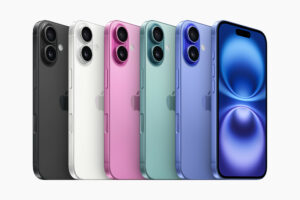
Yesterday, Apple announced this year's batch of new iPhone models - the mainstream iPhone 16, the large-screen iPhone 16 Plus, and the new flagship iPhone 16 Pro and iPhone 16 Pro Max.
With 5G technology becoming increasingly mature, there is little obviously new on the iPhone 16 cellular front.
But this year, Wi-Fi 7 makes its debut, bringing the next generation of Wi-Fi technology to the iPhone for the first time.
And as we recently reported, satellite communication features are also being advanced in iOS 18 for all recent iPhone models via a software update.
Since Apple (like it or not) defines what is considered "mainstream" for mobile technology for the upcoming year, join us in our annual deep dive into just what is new from the connectivity perspective in this year's iPhone updates.
Table of Contents
iPhone 16 Video Story
iPhone 16 Cellular Capabilities
Though we will not know with 100% certainty until the hardware starts to ship on September 20th and the first teardowns are published, it is widely assumed that all the new iPhone 16 models are using the Qualcomm X75 5G cellular modem - a more capable modem chip than the X60 used in the iPhone 13 series, the X65 used in the iPhone 14, and the X70 used in last year's iPhone 15.
The X75 is Qualcomm's first modem chipset to support the 3GPP Release 18 standard, which is being called "5G-Advanced" for marketing purposes. Supporting this new batch of 5G standards should make the iPhone 16 especially future-proof as 5G technology continues to evolve.
The list of officially supported 5G and LTE bands on the USA version of the iPhone 16 is almost entirely unchanged from the iPhone 15.
Changes are highlighted in bold - the only change to the spec sheet is one LTE band that has been dropped:
- Sub-6GHz 5G Bands: n1, n2, n3, n5, n7, n8, n12, n14, n20, n25, n26, n28, n29, n30, n38, n40, n41, n48, n53, n66, n70, n71, n75, n76, n77, n78, n79
- mmWave 5G Bands: n258 (24 GHz), n260 (39 GHz), n261 (28 GHz)
- 4G/LTE Bands: 1, 2, 3, 4, 5, 7, 8, 12, 13, 14, 17, 18, 19, 20, 25, 26, 28, 29, 30, 32, 34, 38, 39, 40, 41, 42,
46, 48, 53, 66, 71
Here are the details on the dropped band:
- LTE Band 46 (LTE-LAA) - This band uses the same unlicensed frequency range of 5150 - 5925 MHz that is more commonly used for 5 GHz Wi-Fi. Using this band, cellular carriers can tap into unused Wi-Fi spectrum to offer crazy fast 4G speeds over short ranges in urban areas. The "LAA" stands for "Licensed Assisted Access," which means that your primary connection is still over traditional licensed cellular bands, but the licensed band is aggregated with a secondary signal over 5GHz Wi-Fi frequencies for a speed boost. The technology is designed to co-exist with nearby Wi-Fi signals without causing any interference.
Why support for this band seems to have been dropped from the new iPhone lineup is a mystery.
UPDATE: Qualcomm X75 AWOL?!?
Early teardowns of the iPhone 16 series have revealed a mysterious Qualcomm SDX71M modem chip, instead of the expect X75.
Neither Apple nor Qualcomm is willing to go on record talking about this chip - and it is proving to be a bit of a mystery chip that seems to be custom made for Apple with no publicly available information on it published.
It is unclear whether this chip is a "5G Advanced" chip like the X75, with support for the 3GPP Release 18 standards. Or whether it is just a somewhat more advanced version of last year's X70.
Early real-world testing is showing that the iPhone 16 is delivering solid cellular performance improvements over the iPhone 15, so there is definitely some significant changes lurking.
One other surprise revealed in teardowns - the US version of the iPhone 16 line has only a single mmWave antenna module, compared to the two used in the past. This might theoretically impact mmWave performance - but we have not seen any testing reported on this yet.
What Happened to LTE-LAA?!?
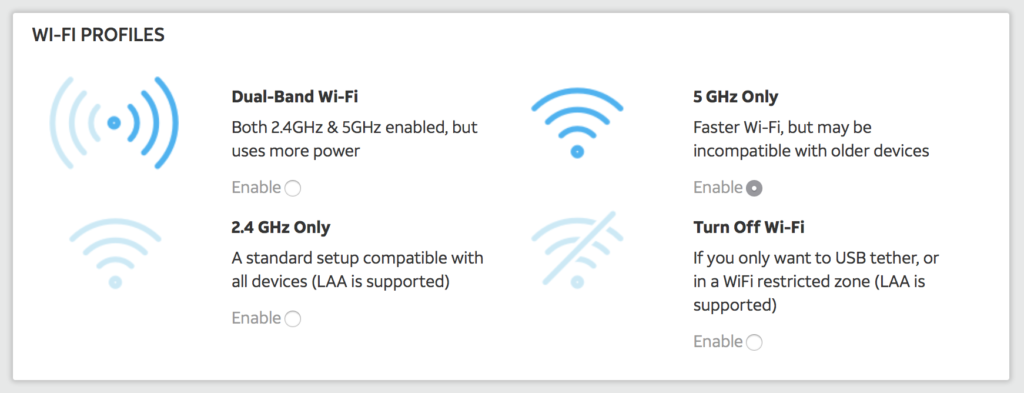
Support for Band-46 and LTE-LAA first appeared on the iPhone XS model in 2018, and this technology has been supported by every iPhone since - as well as most Android phones.
AT&T, Verizon, and T-Mobile all proudly announced LTE-LAA deployments in the 2017/2018 timeframe, and we saw some impressive performance results shared.
But LTE-LAA seems to have fallen out of favor in the 5G era, with 5G spectrum able to provide even greater speeds without the complexity of coexisting with Wi-Fi signals.
The 5G equivalent to LTE-LAA using band n46 to combine 5G signals with unlicensed Wi-Fi spectrum is in the pipeline - but no carriers have deployed it yet.
Is the iPhone dropping LTE-LAA compatibility a sign that carriers are moving away from the 4G-era version of this technology?
Or perhaps there is a technical issue with how the iPhone 16 has implemented Wi-Fi 7 that prevents the cellular and Wi-Fi radios from sharing the antennas tuned for this band.
Without insider info - all we can do is wonder...
A few years ago, losing a significant LTE band would have been a notable step backward.
But with the current state of 5G, we suspect very few people will ever encounter a location where LTE Band-46 will be missed.
Overall - this is a change that only a few cellular geeks (like us!) will likely ever even notice.
One other minor cellular regression that was first introduced in the iPhone 14 continues into the iPhone 16, compared to the iPhone 13.
4G bands 11 & 21 expand coverage to some legacy spectrum used only in Japan. These bands are still missing from the iPhone 16 models sold in the USA. However, these two oddball bands are still found on the Canadian iPhone 16, which is also the model sold in Japan.
Overall, the bands supported by the iPhone 16 cover almost every 4G and 5G cellular band currently in use worldwide, making the iPhone 16 a fabulous and future-proof global roamer.
Legacy 3G UMTS networks and 2G GSM/EDGE networks are supported, although most of these networks have been shut down in the USA.
There are only a few 5G bands on our radar that remain missing in the iPhone 16:
- n13 - Band 13 is the long-range foundation of Verizon's 4G/LTE network, and eventually, Verizon will want to switch to using this band (at least in part) for 5G. This transition is likely still years away, but without band n13 support, the iPhone 16 will be unable to take advantage of this band once Verizon switches. Since Apple is likely well in tune with Verizon's plans, we can only assume that band 13 will not be destined for 5G anytime soon.
- n46 - This band allows the use of underutilized 5 GHz Wi-Fi spectrum for extra capacity on 5G cellular. We still haven't seen 5G n46 gain any traction in the market, and it is probably a few years away.
Support for these missing bands is not critical and is primarily interesting for future-proofing.
The iPhone 16 can connect to almost any network today and in the years ahead.
Other iPhone 16 Cellular Notes
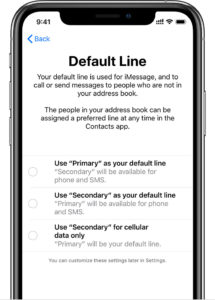
In the USA, all iPhone 16 and iPhone 16 Pro models should have identical cellular capabilities and internal 4x4 MIMO antennas, no matter which carrier you buy from. If you buy directly from Apple, the iPhone 16 will be sold unlocked and capable of use on any US carrier that supports eSIM.
The USA model of the iPhone 16 is eSIM only - only international models support physical SIM cards!
Like other recent iPhone models, the iPhone 16 can have two eSIM plans active simultaneously.
Having an unlocked phone with two plans from two different carriers is a great way to carry some redundancy in your pocket.
International Models Still Limited - No mmWave or 600 MHz Cellular!
Despite the lack of a physical SIM slot, the iPhone 16 models sold in the United States continue to have some significant advantages - even compared to the model offered in Canada and Mexico.
In particular, Apple has kept mmWave 5G support as an exclusive capability for USA-destined phones.
Ultra-high-frequency mmWave 5G signals enable amazingly fast performance, but the signal is exceedingly short-range and requires multiple very specialized antenna modules to receive.
Because mmWave is expensive to implement (and has been very slow to deploy), many lower-priced 5G devices have excluded this capability entirely.
To date, Apple has only included mmWave support on iPhone models sold within the United States, and this continues with the iPhone 16 lineup.
The international iPhone 16 variants will be identical to the USA version, other than cellular capability:
- Canada / Mexico / USVI / Japan / Middle East Model - Lacks all mmWave bands (n258 / n260 / n261) and adds Japanese 4G bands 11 and 21.
- Other International Models - All the various other international models lack mmWave bands and also lack 600 MHz n71 and b71 (T-Mobile's long-range coverage) and AT&T FirstNet (Band 14 and n14), as well as some other minor 4G and 5G bands.
The lack of mmWave support is a potential consideration for Canadians who travel to major US cities where this sort of coverage might make a difference.
Canadians who travel south may want to seek out the USA iPhone models for better future compatibility and resale value.
Those who spend a lot of time in the USA should avoid all of the other international iPhone 16 models since they lack support for the 600 MHz bands that are critical for use on T-Mobile and the FirstNet band that is exceedingly valuable on AT&T.
In other words, travelers who might pass through the USA should consider skipping over the Canadian models and grey-market imports while shopping for iPhones!
Outside of the USA, mmWave has still not been widely embraced for 5G - but mmWave has begun (very) slowly ramping up in both Europe and China.
Overall - it seems that Apple will continue to wait before taking mmWave support internationally.
Apple even dropped mmWave 5G entirely from the latest iPad Pro lineup, showing an increasingly low level of faith in carrier mmWave deployment progress.
UPDATE: Also - early teardowns of the US iPhone 16 have revealed that it has just a single mmWave modem module, as compared to the two found in all previous iPhone models. There are some analysts who suspect that Apple will be dropping mmWave support entirely in future iPhone models that use Apple's internally developed modem instead of Qualcomm's.
Wi-Fi 7 Is Here - And Not Just On The Pro
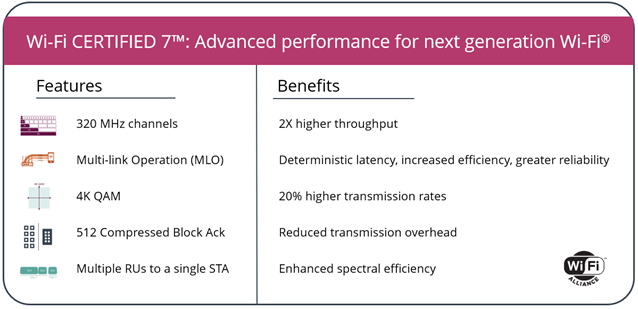
Last year, the iPhone 15 Pro rolled out support for the Wi-Fi 6E standard - so if you had a Wi-Fi 6E compatible router or mobile hotspot device, you could now take advantage of potentially doubled Wi-Fi speeds.
However, this technology was exclusive to the iPhone 15 Pro; the mainstream iPhone 15 remained stuck with the Wi-Fi 6 standard.
This year - all the iPhone 16 models are jumping forward to support Wi-Fi 7.
Our prediction from last year seems to be coming true:
"We still suspect most of the mobile industry may skip over Wi-Fi 6E and migrate directly towards the upcoming Wi-Fi 7 standard over the next year or three."
But with so few routers and other devices supporting Wi-Fi 7 technology, this feature is unlikely to be relevant to most users anytime soon.
It is great however for future proofing - and we expect the iPhone switching to Wi-Fi 7 will mark the beginning of this technology transitioning into the mainstream.
Wi-Fi 7 Advantages
The Wi-Fi 7 (aka 802.11be) standard was only finalized in January 2024 - and devices that support this standard are still exceedingly rare. It is not enough to have a mobile device that supports Wi-Fi 7 - you need to have a router that supports Wi-Fi 7 hosting your Wi-Fi network to enable all the new technological goodness.
Fortunately, Wi-Fi 7 devices are fully backward and compatible with all previous Wi-Fi standards.
Wi-Fi 7 includes some groundbreaking technologies collectively dubbed "Extremely High Throughput (EHT)" that allow for peak theoretical speeds of up to 46 Gbps—almost five times faster than Wi-Fi 6's peak speed of 9.6 Gbps.
Of course, like all peak speed figures, those are mostly theoretical and only possible in perfect laboratory conditions. Real-world performance is lower.
Wi-Fi 7 simultaneously combines three frequency bands - 2.4 GHz, 5 GHz, and 6 GHz. Other features of the Wi-Fi 7 standard should enable routers to better pick channels to avoid interference, as well as enable new techniques to reduce network latency and improve mobile device battery life.
For more on Wi-Fi 7 and the state of Wi-Fi technology, see our featured story:
Wi-Fi Industry Update: Wi-Fi Technology Guidance For RVs, Vans, and Boats
Apple Satellite Text Messaging Coming with iOS 18
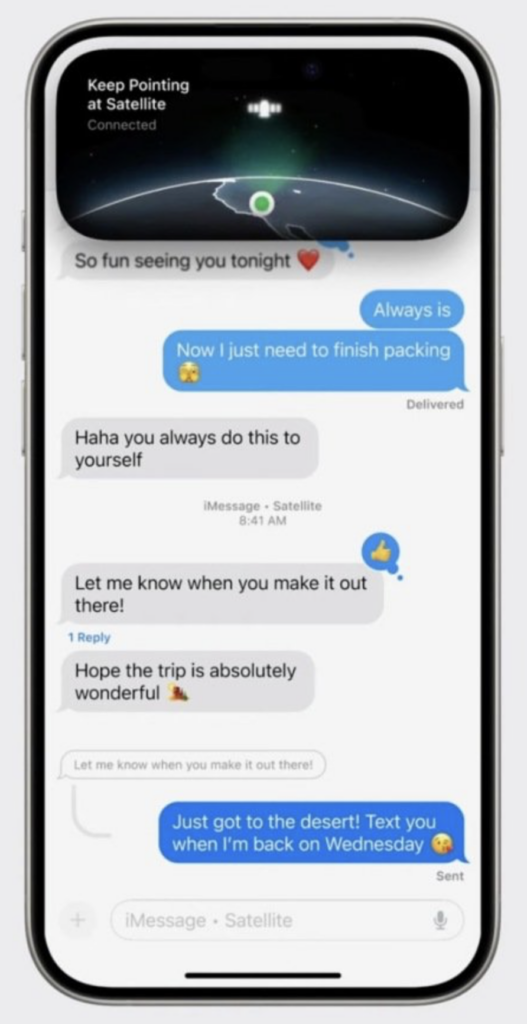
In 2022, Apple jumped ahead of the rest of the industry by being the first to roll out phones with integrated satellite connectivity - enabling this feature in the entire iPhone 14 lineup.
Apple provided emergency satellite messaging capability anywhere (in supported countries) iPhone users could get a clear view of the sky, regardless of cellular coverage.
But this system was designed for true emergencies only - and it could only communicate (slowly!) with emergency dispatch centers.
In 2023, alongside the iPhone 15 launch, Apple added support for less life-threatening situations by allowing users to contact AAA Roadside Assistance via satellite. But overall, the system remained extremely limited.
But now, in 2024, Apple is enabling full SMS and iMessage text messaging over satellite.
This feature will be compatible with the iPhone 16, iPhone 14, and iPhone 15, too.
Satellite messaging has been working in beta for a while now and will be available to everyone with the public release of iOS 18 next week, September 16th.
Satellite messaging will initially be supported in the United States and Canada, though coverage will likely continue to expand over time.
Apple is promising that its satellite features will be free, but only at first:
"Apple’s satellite features are included for free for two years starting at the time of activation of a new iPhone 14 or later."
The very first iPhone 14 customers will soon reach their two-year anniversary of ownership, and Apple announced that they will receive a third year of complimentary service.
This means Apple may not reveal its ongoing satellite service costs until next year - allowing more time to for Apple to see what sort of pricing Starlink and T-Mobile unveil for their own satellite messaging features later this year.
For more on satellite messaging from Apple and others:
- Industry Update: Mobile Satellite Internet for RVers & Boaters – Early 2024 Update: Starlink, Kuiper, Direct To Cellular, and Beyond! - Our recent deep dive into the state of the satellite internet world.
- News Story: Apple Satellite Text Messaging Coming with iOS 18 for iPhone
Concluding Thoughts & iPhone 16 Release Dates
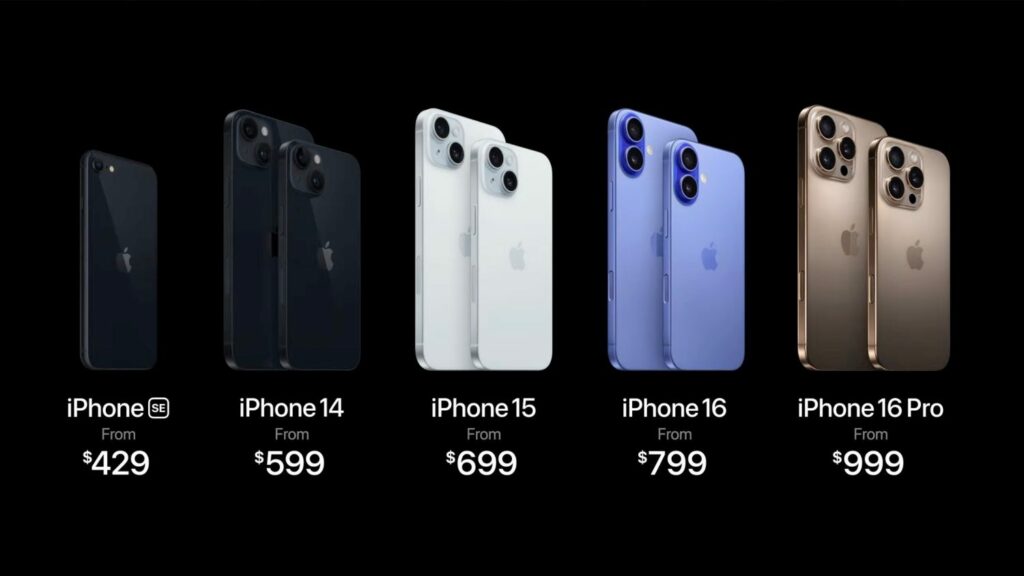
The iPhone 16 and iPhone 16 Pro models will be available for pre-order this Friday, September 13th - and will ship next week on September 20th.
The iPhone 15 and iPhone 14 are staying in the lineup, too, with price drops making them more affordable for those interested in the safety and security of satellite connectivity but who aren't interested in being on the cutting edge.
As is the case every year, all the carriers and Apple will have promotions for the new iPhones. Those interested in upgrading should do their homework and keep a keen eye on the fine print.
Most promotions require turning in an existing phone and/or agreeing to a service commitment to "pay" for the phone via monthly bill credits. We don't track these sorts of deals here.
In short, carriers intend to entice you to make a long-term commitment to their service in exchange for a free or discounted iPhone.
Make sure you know what you are getting into - especially if you are the sort of geek who likes to upgrade every year or two.
Past iPhone Model Analysis:
Related Guides & Content:
- 5G Cellular Fundamentals for Mobile Internet - Our featured guide will help you understand what 5G is all about.
- 5G Cellular Resources - All of our guides & articles tracking 5G.
- Ways to Use Cellular Data To Get Online: Mobile Hotspot, Smartphone or Router?
- Smartphone Selection Tips
- Understanding LTE Modem Specifications (MiFi, Jetpacks, Routers, Phones)
- Cellular Evolution: 2G Thru 5G, And Beyond!
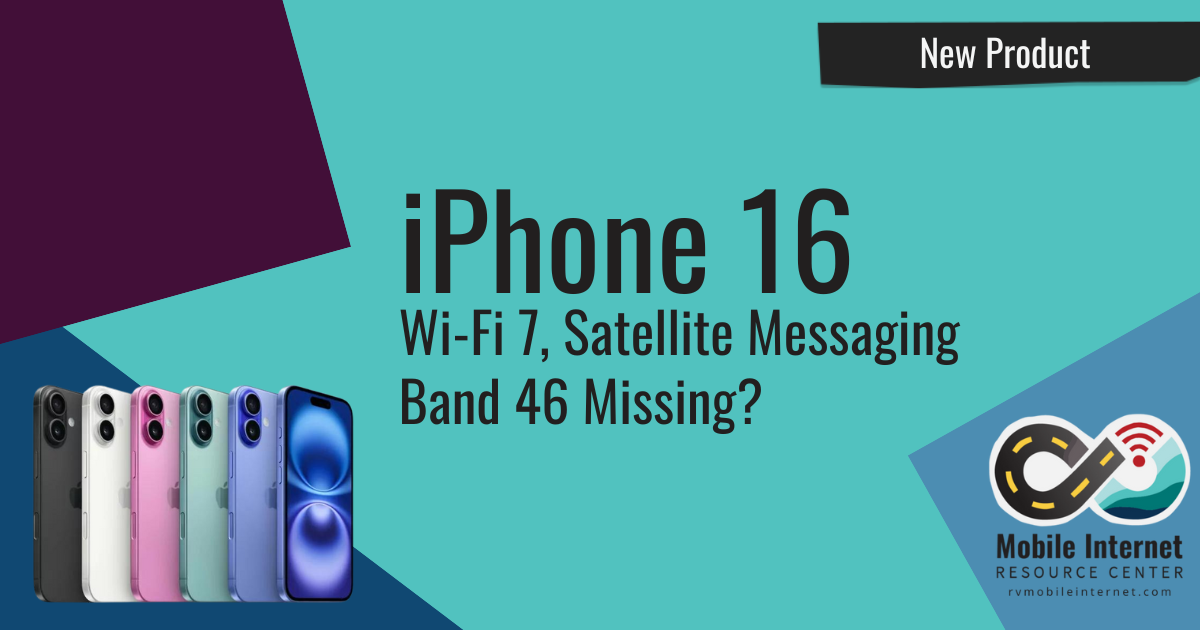





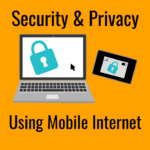
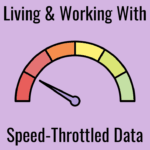
 Mobile Internet Resource Center (dba Two Steps Beyond LLC) is founded by Chris & Cherie of
Mobile Internet Resource Center (dba Two Steps Beyond LLC) is founded by Chris & Cherie of